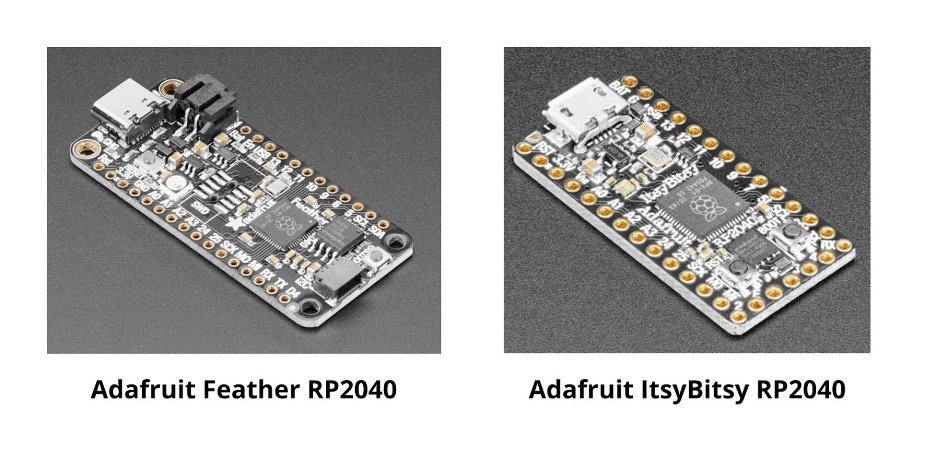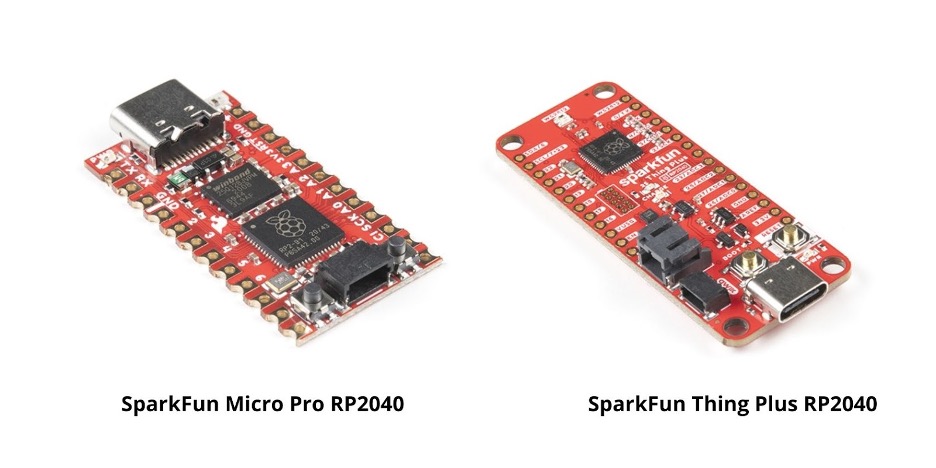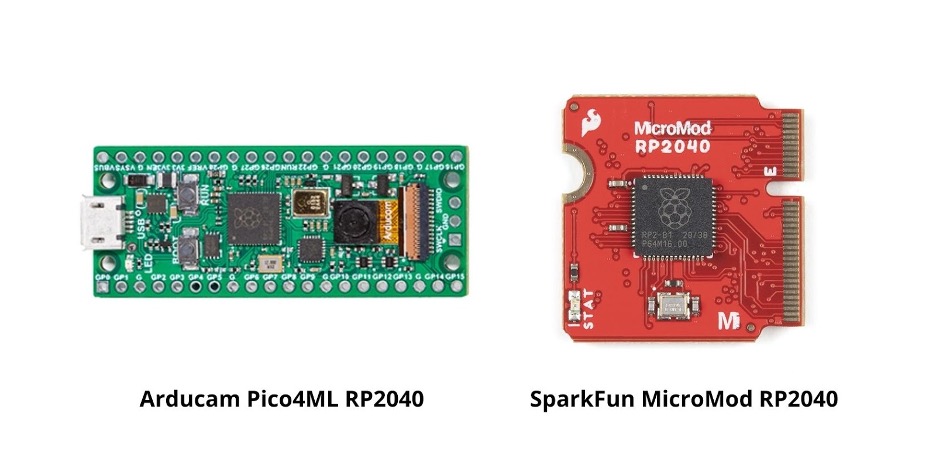Why Raspberry Pi's RP2040 is the Popular Choice for Development Boards
June 26, 2021
Story

Raspberry Pi SBCs are some of today's most popular development board options. Raspberry Pi comes in flavors ranging from the Raspberry Pi 2, 3, and 4 to the Raspberry Pi Zero and Zero W "maker" boards. Now, the Raspberry Pi Foundation has gone a step further by releasing of its very own processor: The RP2040 MCU.
The Raspberry Foundation launched its first MCU development board featuring the powerful homegrown RP2040 chip in January 2021. The development board, popularly known as Raspberry Pi Pico, gained a lot of attention due to its rock bottom price of $4 USD and programmable IOs. Additionally, there is a lot more to this board afforded by the RP2040 chip, making it a perfect choice for a development board.
Image Credits: Raspberry Pi Pico.
But you may have also seen many Raspberry Pi competitors also coming with their own RP2040 boards.
The Secrets of the Raspberry Pi RP2040 Revealed
Let’s explore more about the RP2040 SoC and understand why is it such a popular chip for development boards. Apart from architectural hardware design, some factors make it stand out from the other chips.
Here are some of those factors:
High-Frequency Clock of 133 MHz
The RP2040 SoC is a 32-bit dual-core chip with an ARM Cortex M0+ that runs at a 133 MHz frequency clock. Hence, the RP2040 chip is much faster than other options in the class of boards like the Pico that have chips with low-frequency clocks in the range of 10-20 MHz.
The cores can also support over-clockable frequencies of up to 400 MHz, making it faster for intense applications.
Support for Machine Learning Applications
As both cores of the RP2040 SoC work at relatively high speed the chip supports comparably high computational data processing. This makes it suitable for machine learning use cases that require large data processing capacity, which wasn't lost on the creators of RP2040-based development boards that are compatible with TensorFlow Lite Micro.
Some of these boards support applications like person detection, gesture detection, and voice recognition. But more on this later.
Larger RAM and Flash Memory
A higher frequency clock is only useful when the memory bandwidth is also increased. The RP2040 comes with 264 KB RAM, which is significantly larger than the 32 KB of RAM that's common on many mainstream MCUs.
Additionally, the RP2040 chip features 2 MB flash memory with support for 16 MB of external flash memory via a QSPI connector.
Low Power Consumption
The RP2040 SoC features low dynamic power consumption along with several low-power modes. The low power rating offers flexibility for battery-powered applications, thus making it useful in mobile applications.
While the power rating of the RP2040 is higher than competing chips, its high-speed cores and their resulting performance justify the energy consumption.
Low Cost of Manufacturing
The RP2040 is manufactured by the Raspberry Pi Foundation on a 40 nm TSMC silicon wafer, and designed in a 7 × 7 mm QFN-56 SMD package. Compact integration of system peripherals shrinks the form factor and reduces the chip's manufacturing costs.
Overview of RP2040-based Development Boards
As discussed in the previous sections, many hardware companies have announced MCU development boards featuring the Raspberry Pi Foundation’s RP2040 SoC. However, the other development boards tend to be designed for specific use cases and come with some additional functionality.
Adafruit’s RP2040 Development Boards
Adafruit has designed two RP2040 development boards, the Adafruit Feather and Adafruit ItsyBitsy. Both boards have flexible software support via the CircuitPython, MicroPython, and C/C++ languages.
Also, the 264 KB RAM and 4MB SPI flash that comes stock on the boards leave plenty of space for firmware and application code that can be put to good use.
Image Credit: Adafruit Feather and Adafruit ItsyBitsy.
The Adafruit Feather RP2040 comes with 21 GPIO pins, which are less than the Adafruit ItsyBitsy's 23 GPIO pins. The form factor of the Adafruit Feather is 50.8 mm x 22.8 mm x 7 mm, while the Adafruit ItsyBitsy's is 36 mm x 18 mm x 4 mm.
Arduino Nano RP2040 Connect Board
The fact that Arduino hardware features a Raspberry Pi’s SoC in and of itself makes for a popular development board. This, of course, is because of the performance of the RP2040 hardware and robust Arduino software support that makes it a good choice for developers and hobbyists.
Image Credit: Arduino Nano Connect Board
The cost of the Arduino Nano RP2040 Connect Board is a bit on the higher side, as it comes with Wi-FI and Bluetooth connectivity. This opens up many avenues for innovative embedded development projects featuring wireless technology, as well as and various IoT application ideas.
SparkFun’s RP2040 Development Boards
There are two RP2040 development boards developed by SparkFun, the SparkFun Micro Pro - RP2040 and SparkFun Thing Plus - RP2040. Both boards come with the same 264 KB SRAM and 16 MB flash as other RP2040-based development boards. But the 30 GPIO pins, including ADC pins and a WS2812 addressable LED, are common between the two boards but features that set them apart from some of the competition.
Image Credits: SparkFun Micro Pro and SparkFun Thing Plus
The SparkFun Micro Pro supports C/C++ and MicroPython, whereas the SparkFun Thing Plus also supports CircuitPython. Size-wise, the SparkFun Micro Pro is smaller than SparkFun Thing Plus.
RP2040 Development Boards for Machine Learning
As the RP2040 chip offers high-speed dual cores and a high-frequency clock, various RP2040 development boards have been dedicated to machine learning use cases. The Arducam Pico4ML board and SparkFun’s MicroMod RP2040 card, for example, hit the sweet spot for machine learning applications.
Image Credit: Arducam Pico4ML and SparkFun MicroMod
The Arducam Pico4ML comes with an onboard LCD and various sensors, making it suitable for person detection, gesture detection, and speech recognition. The integration of the RP2040 chip with these sensors makes a good choice for affordable machine learning applications.
The SparkFun MicroMod RP2040 M.2 add-on card can work with different SparkFun carrier boards, such as SparkFun’s ML carrier board that comes with two microphones and a 3-axis accelerometer for real-time data collection. Thus, the integration of the SparkFun MicroMod card with an ML carrier board opens up a vast array of machine learning use cases.
The Popularity of RP2040 SoC
The high-speed, low power, and low-cost of the RP2040 make it a popular choice for MCU development boards. Several companies are working on RP2040 development boards in addition to the boards mentioned in this article. You can visit the official Raspberry Pi Foundation webpage to learn more about all of these development boards, or head over to the Raspberry Pi Foundation forum.









